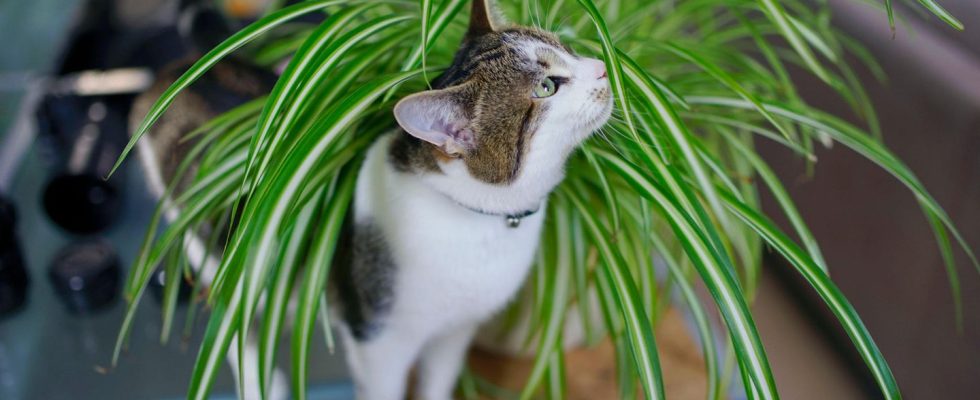Cat-proof household
Green Danger: Which Houseplants Are Poisonous to Cats?
Non-poisonous plants such as green line can be safely nibbled by cats
© kodachrome25 / Getty Images
It’s natural for cats to eat grass. Not because they like the fleshy greens so much, but to stimulate their digestion. Houseplants are a welcome alternative for house cats. What their owners often don’t know is that many of them are poisonous to cats.
Cats that are regularly outdoors eat a few grasses and herbs every now and then during their forays. The reason for this is very simple: intensive grooming causes countless hairs to end up in the gastrointestinal tract. These cannot always be digested, so a cat gets rid of the hairballs (so-called bezoars) by regurgitating them. Animal experts believe that the intake of plant fiber is intended to facilitate the process. But what if a house cat has no opportunity to follow its natural instincts? In this case, he simply nibbles on houseplants that resemble grass. However, the animals do not stop at non-poisonous specimens. It is all the more important for all owners to know which houseplants are not poisonous to cats – and which symptoms are typical of poisoning.
Which plants are not poisonous to cats?
House cats like to nibble on houseplants that are similar to grass. For this reason, you can provide your pet with safe specimens to try, such as one spider plant or indoor bamboo. Alternatively, you can sow fast-growing sweet grasses yourself – for example wheat, oats, rye, barley or millet. Or you can buy something ready-made straight away Cat grass or the seeds in one Online shop for pet supplies.
Of course, these are not all the houseplants that are suitable for cats. Below we list further examples.
Non-toxic green plants: |
|
If you would also like to place flowering houseplants in your apartment, examples such as these are ideal:
Cat-friendly flowering plants: |
|
There are even a variety of aromatic herbs that cats (sometimes) like to eat:
Non-toxic culinary herbs: |
|
Poisonous houseplants: These plants are taboo
Unfortunately, particularly popular houseplants are on the list of poisonous specimens for cats, including the following plants:
- azalea
- Aloe vera
- Cyclamen
- Birch fig
- Bow hemp
- Dragon tree
- ivy
- A leaf
- Ivy plant
- Flamingo flower
- Flaming Käthchen
- Fiddle fig
- Lucky Feather
- Rubber tree
- Lilies
- Monstera
- Orchids
- Philodendron
Important note about seasonal plants and cut flowers:
During Advent, special house plants are often set up for decoration, such as an amaryllis or a poinsettia – unfortunately, these two specimens are highly toxic to cats and should not be used in any pet-friendly household. The same also applies to tulips and daffodils: the typical spring bloomers delight millions of households every year, but are also taboo for cats.
Symptoms of poisoning: This is what you need to pay attention to
If there are poisonous houseplants in your home because you were not aware of the danger until now (or your cat has shown no interest in them), you should know the main symptoms of possible poisoning. Depending on how toxic a plant is, your cat or tomcat will exhibit different behaviors. Since the poison spreads through the gastrointestinal tract, the most common symptoms include vomiting, diarrhea and constipation. Other symptoms of poisoning to watch out for include:
- Tremble
- cramps
- paralysis
- dilated pupils
- Foaming at the mouth
- Refusal of food
Important: In the event of poisoning, it is important that you act immediately: In other words, take your pet to the vet immediately. Even if you have only observed your cat eating a poisonous plant but is not showing any noticeable symptoms (yet). It’s best to take a photo of the affected specimen in advance or take the houseplant straight into the practice so that the vet knows immediately what he is dealing with. If no vet is open, you can also contact the local animal emergency service or the Emergency assistance turn around. If you act too late, poisoning can lead to death in the worst case scenario. And of course every pet owner wants to avoid that.
Source: food bowl, A heart for animals
You might also be interested in:
This article contains so-called affiliate links. Further information are available here.


